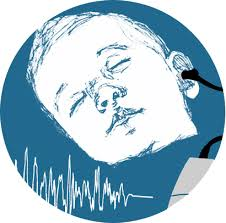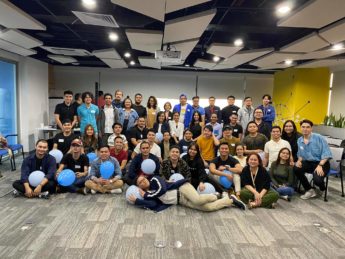From the booming sounds during a party to the gentle whispers from a significant other, the sense of hearing plays a significant role in making our days more vibrant. For hearing people, it is an essential to understand and appropriately respond to verbal communication. In recent years, researchers[1] in the field of HIV care has put their attention towards the hearing health of people living with HIV (PLHIV). A 2013 integrative review by Assuiti, Lanzoni, dos Santos, Erdmann, and Meirelles[2] revealed that there was not enough evidence for a direct association or implication of antiretroviral therapy (ART) and hearing loss, however they suggested to investigate the associated factors further due to inconclusive data.
Hearing Complaints among PLHIV
According to van der Westhuizen, Swanepoel, Heinze, and Hofmeyr[3] PLHIV were more likely to report auditory and otological symptoms such as tinnitus, vertigo, and otalgia due to otitis media while a few others have reported sensorineural hearing loss, especially for those who are in the advanced stages of the infection. It was previously suggested[4] that this was due to the direct action of the virus on the central auditory system, however there is also evidence pointing towards it acting upon the peripheral auditory pathway as well[5], which occurs more often when viral load is high.
Two major concerns for people living with HIV who are not enrolled in treatment are co-occurring infections that one may have when first infected, and opportunistic infections. When it comes to risk for hearing loss, CMV infection[6], bacterial meningitis[7], otosyphilis[8] are of the most concerning. Due to non-treatment, PLHIV may become immunocompromised wherein their immune system becomes less effective defending against pathogens. As such, those related to the neural and auditory system may significantly affect one’s hearing. With adherence to treatment however, these concerns are eliminated.

The Case with Pregnant Women Living with HIV
Aside from the mother, there is additional concern for the child a woman carries when she is infected with HIV. Maternal health and health behaviors can influence the development of the child, as such they are even more vulnerable for prenatal TORCH infections – one of the most common causes of congenital hearing loss. Among these are toxoplasmosis which has 70% incidence rate of hearing loss[9], rubella which is declining due to immunization programs[10], CMV wherein 33-50% of hearing loss incidences have late onset[11], and HSV which is transmitted when the child is delivered vaginally[12].
Antiretroviral Medication and Hearing
Past studies[13] have shown a trend of higher hearing thresholds among PLHIV on treatment as compared to non-infected individuals, however inconclusive with regards to the mechanism of action[2]. Findings are mixed with some suggesting that components of some ART combinations such as nucleoside analog reverse transcriptase inhibitors[14], Epzicom, and Trizivir[15] have the potential to adversely affect hearing; while others suggest that HIV infection and ART adherence have no impact on cochlear function.

In some ways, living with HIV and hearing loss are quite similar. Both are silent conditions that can only be identified when one decides to get tested. However, they do not need to coincide. Treatment is readily available for PLHIV in the Philippines to prevent any opportunistic infections that can cause hearing loss. The Universal Newborn Hearing Screening and Intervention Act of 2009 also ensures that all newborns, regardless of risk, are screened for hearing loss.
So talk to your doctor if you have any concerns with your own or your child’s hearing. You can be referred to a Certified Newborn Hearing Screening Center or Hearing Center near you.
Text by Carlos Diego A. Rozul
References
1 https://www.audiology.org/news/hiv-and-hearing-loss
2 http://www.scielo.br/pdf/bjorl/v79n2/en_v79n2a19.pdf
3 http://yvdwaudiology.co.za/wp-content/uploads/2017/05/2013_Westhuizen-Swanepoel_IJA.pdf
4 https://bmcinfectdis.biomedcentral.com/track/pdf/10.1186/1471-2334-6-28
5 http://www.producao.usp.br/bitstream/handle/BDPI/9160/art_MATAS_Avaliacao_auditiva_na_Sindrome_da_Imunodeficiencia_Adquirida_2010.pdf?sequence=1
6 https://www.sciencedirect.com/science/article/abs/pii/S0753332297823268
7 https://www.researchgate.net/profile/Elizabeth_Molyneux/publication/8963254_The_effect_of_HIV_infection_on_paediatric_bacterial_meningitis_in_Blantyre_Malawi/links/02bfe50f78a79cb76f000000/The-effect-of-HIV-infection-on-paediatric-bacterial-meningitis-in-Blantyre-Malawi.pdf?origin=publication_detail
8 https://onlinelibrary.wiley.com/doi/full/10.1111/j.1468-3083.2004.00939.x
9 https://www.ncbi.nlm.nih.gov/pubmed/8770668
10 http://www.bioline.org.br/request?hg06026
11 https://www.jpeds.com/article/S0022-3476(99)70328-8/ppt
12 https://www.ncbi.nlm.nih.gov/pmc/articles/PMC4222184/
13 https://www.ncbi.nlm.nih.gov/pmc/articles/PMC4081880/pdf/cln-69-07-469.pdf
14 https://academic.oup.com/cid/article/32/11/1623/464432
15 https://www.ncbi.nlm.nih.gov/pubmed/24487230
Images
1 https://www.flickr.com/photos/photobythomas/11535403595/in/album-72157644872472185/
2 https://pixabay.com/en/pregnancy-woman-asian-2594275/
3 https://www.flickr.com/photos/niaid/32483530942
4 https://www.facebook.com/PHnewbornhearingscreening/




